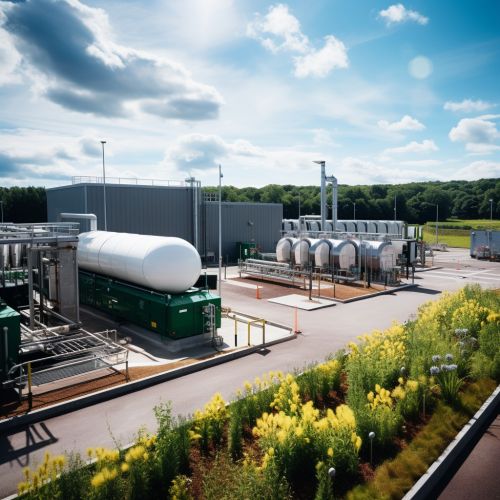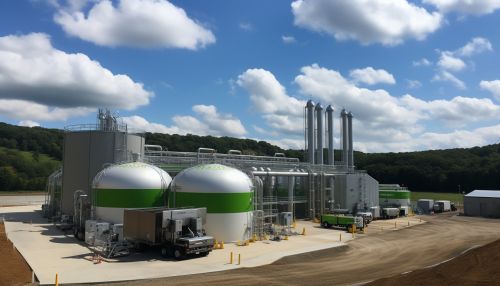Biomethane
Introduction
Biomethane, also known as renewable natural gas (RNG), is a biogas that has been upgraded to a quality similar to fossil natural gas. By upgrading the quality to that of natural gas, it becomes possible to distribute the gas to customers via the existing gas grid, within existing appliances. Biomethane is a sustainable energy source, and its production and use have a low environmental impact.
Production


The production of biomethane involves the use of organic materials which undergo anaerobic digestion or gasification. Anaerobic digestion is a series of biological processes in which microorganisms break down biodegradable material in the absence of oxygen. The process produces a biogas, which is then upgraded to biomethane.
Anaerobic Digestion
Anaerobic digestion is a natural process in which organic materials are broken down by bacteria in an oxygen-free environment. The process takes place in a sealed, oxygen-free tank known as an anaerobic digester. The organic material, often a mixture of food waste, agricultural residues, and sewage sludge, is heated to a temperature of around 37°C to encourage the growth of the bacteria.
Gasification
Gasification is a process that converts organic or fossil fuel-based carbonaceous materials into carbon monoxide, hydrogen, and carbon dioxide. This is achieved by reacting the material at high temperatures, without combustion, with a controlled amount of oxygen and/or steam. The resulting gas mixture is called syngas or producer gas and is itself a fuel.
Upgrading
The biogas produced from anaerobic digestion or gasification contains contaminants and various non-methane compounds. These must be removed to produce biomethane. The upgrading process involves four main steps: removal of hydrogen sulfide, moisture, carbon dioxide, and other impurities.
Hydrogen Sulfide Removal
Hydrogen sulfide is a toxic and corrosive compound that can be present in biogas. It is removed by passing the biogas through a scrubber, where it reacts with iron oxide to form iron sulfide.
Moisture Removal
Moisture is removed from the biogas using a condensation process. The biogas is cooled, causing the moisture to condense and separate from the gas.
Carbon Dioxide Removal
Carbon dioxide is removed from the biogas using a process known as pressure swing adsorption. The biogas is pressurized and passed through a bed of activated carbon, which adsorbs the carbon dioxide.
Other Impurities
Other impurities, such as siloxanes, halogenated compounds, and volatile organic compounds, are removed using activated carbon filters.
Uses
Biomethane can be used in all applications designed for natural gas. This includes heat and power generation, transportation, and residential use.
Heat and Power Generation
Biomethane can be used to generate heat and power in combined heat and power (CHP) units. These units are highly efficient, converting up to 90% of the energy in the gas into useful heat and power.
Transportation
Biomethane can be used as a fuel for vehicles. It is a clean, renewable alternative to fossil fuels and can significantly reduce greenhouse gas emissions from the transport sector.
Residential Use
Biomethane can be used in homes for cooking, heating, and hot water. It can be supplied to homes via the existing natural gas grid, making it a convenient and sustainable energy source.
Environmental Impact
Biomethane has a low environmental impact. It is a renewable energy source, and its production and use result in a net reduction in greenhouse gas emissions. The organic materials used in its production are often waste products, so their use also helps to reduce waste.
